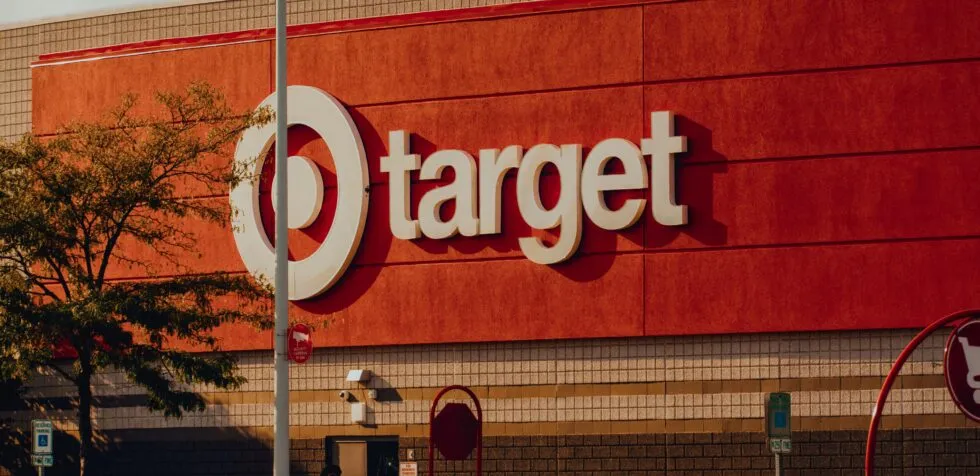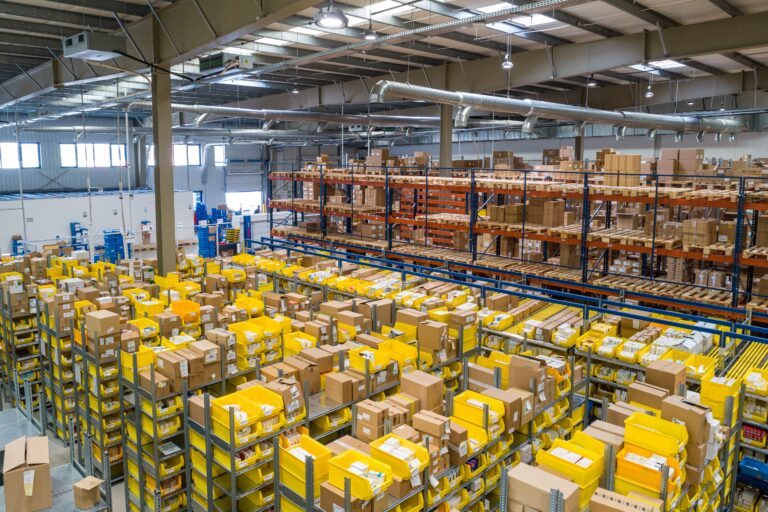How to Choose the Best 3PL For Target Plus

Last updated on May 30, 2025

Nearly every American has shopped at a Target – the retailer holds a level of popularity comparable to that of Amazon and Walmart. The Minnesota retailer’s brick and mortar footprint is massive. As of 2024, Target had 1,956 stores in the U.S and hauled in $107 billion in revenue. More importantly, the company holds a huge audience for sellers and brands to target – according to Business Insider, 8 out of 10 US shoppers are Target customers and the average Target customer makes 23 trips a year to one of their stores. But while Target has had a sizable customer base for years, eCommerce sellers and brands have largely focused on their competitor, Amazon. However, in recent years, Target has begun expanding its online offerings. In 2019, it launched its third party marketplace on its website – Target Plus. This has opened up a massive new audience for eCommerce merchants to expand into.
In this article, we look at the advantages Target Plus offers sellers, the key factors merchants must consider when evaluating a 3PL for their Target Plus orders, and the options that are available.
Why Target Plus Is A Great Option For Sellers
Invite-Only Marketplace With a Large Audience
Target Plus was introduced in 2019 as an invite-only platform. The company said it was doing this to carefully curate the assortment of brands and products available to customers on its website. According to Marketplace Pulse, the program launched with 30 sellers on Target Plus in 2019. Five years later, that number has grown to more than 1,200.
This represents enormously exclusive digital real estate for brands. In certain product categories, there may be just one brand featured. This means that all the customers visiting Target’s site focus exclusively on this limited selection, boosting sales enormously for the featured brands.
Slash Your Fulfillment Costs by Up to 30%
Cut shipping expenses by 30% and boost profit with Cahoot's AI-optimized fulfillment services and modern tech —no overheads and no humans required!
I'm Interested in Saving Time and MoneyAutonomy Over Logistics and Fulfillment
Brands have freedom from having to work with another platform-captive fulfillment solution, such as Fulfilled By Amazon (FBA) or Walmart Fulfillment Services (WFS). Target Plus enables them to handle their logistics and order fulfillment however works best for them – through their own warehouse, a traditional 3PL or order fulfillment networks.
This also means freedom from the fees and surcharges associated with these platform captive fulfillment solutions. Lastly, it allows merchants to manage their inventory in a centralized location – rather than having to send more inbounds to a warehouse owned by a marketplace sales channel, they can simply pull from a centralized pool of inventory that they use for their own website, or Shopify storefront, for example.
A More Equitable Marketplace – No Inhouse Competitor like Amazon FBA
Target Plus allows merchants to send orders out to customers, Target stores or Target fulfillment centers through whatever logistics operation works for them. Additionally, because Target does not have its own competing logistics network (such as FBA on Amazon), there is no preferential treatment provided to sellers who use certain logistics providers.
The model is simple – let the merchants compete, and may those with the best products and order fulfillment standards win.
While Target Plus is a great growth opportunity, the marketplace is still invite-only – Target themselves reach out to the brands that they think would be a good fit for them, explaining the exclusivity. Their website has a form for merchants to fill out if they’re interested in being part of the marketplace, but Target carefully curates participants in the program, and applicants must strive to meet rigorous standards for acceptance.
What Should You Look For In A Target Plus 3PL?
In Target’s own words, the items from 3rd party sellers featured on their website appear exactly the same as all other listings, meaning that these merchants are responsible for upholding the experience customers expect from Target through their product assortment and order fulfillment standards.
Through the invite-only process, Target ensures the product assortment is what customers expect. However, the order fulfillment standards are entirely your responsibility – your ability to maintain enrollment in Target Plus largely depends on the 3PL that you work with.
We’ve outlined the criteria that we think are most important when choosing a 3PL partner for your Target orders:
Ability to Fulfill Orders in 1 Business Day

Target Plus requires participating brands to fulfill their orders (get it out of the warehouse) in 1 business day. This requires warehouses that have excellent picking and packing practices, as well as order fulfillment standards.
Ensure Order Delivery in 5 Business Days
The marketplace requires that brands/products deliver orders to the end-customer in under 5 business days. However, customers today expect fast, free shipping in under 2 days across every channel. Amazon and their Prime loyalty program have created this customer expectation.
Flexibility To Use All Shipping Carriers and Services
Target Plus expects participating sellers to be able to accommodate a variety of carriers and shipping services.
Ability to Produce a Target.com Branded Packing Slip on Every Shipment
On every order that is sent out from the warehouse, Target requires a branded packing slip to be part of the shipment. This is something that needs a 3PL who will sweat the details and ensure that the little – but very important – things are taken care of.
Full Compliance with Target’s EDI Requirements
Target requires merchants to be able to receive and push communications via Electronic Data Interchange (EDI). These communications are automated. Target will use EDI to push purchase order information to merchants. To provide acknowledgement of order receipt and notify Target that the order has been shipped from the warehouse, the merchant must EDI to push this information back.
There are a variety of EDI systems that you can use to connect to Target. Importantly, your 3PL must be able to help you stay fully compliant with these requirements.
Responsive, Reliable Customer Support

Order fulfillment is a complex operation, involving multiple, intricate steps in the process from click to delivery. Things don’t always go as planned, but what is crucial is ensuring that your 3PL has a responsive, reliable customer support team whom you can rely on to fix problems fast, with minimal disruption to your business operations.
Most traditional 3PLs may not have personnel with the experience and expertise required to troubleshoot and fix problems fast – costing you precious time and sales. It is important to identify a Target Plus fulfillment partner with a reliable, responsive customer support team – who will be ready to dive in and solve problems quickly, so that you’re always selling and keeping your customers happy.
So now that we’ve taken a look at the important criteria that guide your choice of a 3PL for Target Plus, let’s look at the options that are actually available to you, and the pros and cons of each of them:
Looking for a New 3PL? Start with this Free RFP Template
Cut weeks off your selection process. Avoid pitfalls. Get the only 3PL RFP checklist built for ecommerce brands, absolutely free.
Get My Free 3PL RFPTop Target Plus 3PLs
Amazon Multi-Channel Fulfillment
Amazon Multi-Channel Fulfillment (MCF) is Amazon’s service through which you can fulfill orders on sales channels outside Amazon, such as eBay and Target Plus.
The service deploys the same infrastructure and resources that power Amazon’s in house Fulfilled By Amazon (FBA) logistics network.
ShipBob
Cahoot: The Best Target Plus 3PL
Cahoot’s peer-to-peer order fulfillment network is built for the future of eCommerce. Our network of warehouses is located at strategic locations across the US, enabling Target Plus merchants to offer their customers ultrafast shipping. Our fulfillment centers are well equipped to handle all types of SKUs – including heavier, seasonal, larger-sized and slow moving ones (which the typical Amazon Fulfillment Center may struggle to process).
We are compliant with all aspects of the Target Plus program. Our US based customer support team is always ready and responsive to ensure that your order fulfillment operations are running smoothly all the time.
Cahoot is committed to helping Target Plus sellers grow their businesses with fast and affordable ecommerce order fulfillment service.
With Cahoot’s next generation shipping software, you get much more than that. Our system intelligently rate shops across different carriers, services and warehouse locations on every single order to ensure that the cheapest shipping label that will meet the 5 day delivery timeline is picked on every order.
This ensures you see savings on every order, which gives you back money to invest in growing your brand and sales.
Summary
Target Plus is Target’s curated, invite-only marketplace for third-party brands. Unlike open marketplaces, Target’s program is intentionally exclusive: the retailer hand-picks sellers whose products “complement Target’s assortment” and uphold a high bar of quality. Sellers list on Target.com alongside Target’s own inventory, and must fulfill orders from their own warehouses (Target does not fulfill on behalf of sellers). In return, sellers gain exposure to Target’s ~200M monthly visitors and Target’s marketing tools (e.g., Roundel ads).
Officially launched in 2019 with just 30 sellers, Target Plus has grown cautiously. Market data shows about 650 sellers as of early 2023, and ~1,200 sellers by mid-2024 – roughly doubling in one year. Target executives say they “doubled the number of partners and products” on Target Plus in the prior year. Notable recent expansions include a June 2024 partnership with Shopify’s Marketplace Connect, enabling qualified Shopify merchants to apply to Target Plus and even sell in Target’s stores. This partnership is expected to significantly ramp up vendor count in the coming years.
Table 1. Summary of the Target Plus Program Requirements
|
Requirement
|
Details
|
|---|---|
|
Fees
|
No setup or listing fees. Target charges category-based commissions (5–15%) on each sale. No monthly account fees.
|
|
Application
|
Invite-only. Potential vendors must have a U.S. business (with W-9) and sell non-competitive product lines. Target typically assesses fit via partner referrals (ChannelEngine, Zentail, Shopify) or direct invitation. A Target Plus application exists, but final approval is at Target’s discretion.
|
|
Integration
|
Must integrate via an approved technology partner. Target provides access to a Merchant API (via Mirakl backend) and supports integration through platforms like Shopify’s Marketplace Connect or ChannelEngine/Zentail. Sellers can sync products, inventory, and orders via these partners. (Custom integrations must adhere to Target’s API specs.)
|
|
Shipping SLA
|
Ship within 24 business hours of the order. Target expects orders to arrive to the guest within a 5-business-day transit window. Only UPS, USPS, or FedEx may be used (no Amazon/Walmart fulfillment). Sellers must use plain (unbranded) packaging and cannot use Target’s or competitors’ branding.
|
|
Payment Terms
|
Target pays sellers weekly (every Tuesday).
|
|
Returns
|
Target’s customers enjoy free returns. Sellers must accept both mail-in returns and in-store returns. Specifically, sellers pay for free return shipping on individual orders. For returns in stores, sellers can either accept palletized returns at their warehouse or instruct Target to destroy/recycle items. Sellers are expected to process refunds quickly after returns are received.
|
|
Other Expectations
|
Sellers must honor Target’s RedCard 5% discount on eligible orders and offer free shipping on orders $35+. Product data requirements are strict (size charts for apparel, ingredient panels, etc.). Target reviews item productivity and can delist underperforming SKUs. Dedicated staff (9 am–5 pm CST) should monitor the Partner Portal daily.
|
Scale Faster with the World’s First Peer-to-Peer Fulfillment Network
Tap into a nationwide network of high-performance partner warehouses — expand capacity, cut shipping costs, and reach customers 1–2 days faster.
Explore Fulfillment NetworkInvitation and Onboarding Process
Joining Target Plus typically starts with selection or referral. Target rarely opens blanket applications; instead, they curate brands that “mesh well with existing offerings”. Sellers often improve their visibility (on Amazon, Walmart, etc.) first; Target favors known, trusted brands. Integration partners (like Zentail or ChannelEngine) may nominate promising sellers to Target. In June 2024, Target announced that U.S. Shopify merchants can now “apply to sell online on Target Plus” via Shopify’s Marketplace Connect app, but even this route is selective.
Once invited, the seller signs Target’s Marketplace agreement and attends onboarding training. Onboarding steps include product catalog setup (matching Target’s category and data rules), shipping/return process alignment, and systems integration. Most vendors use an approved partner tool: for example, a Shopify merchant would install the Target Plus app and push products through Target’s Mirakl-powered channel. Vendors must pass an onboarding checklist (covering legal docs, inventory validation, and test orders) and typically have about 120 days to get 75% of desired SKUs live. After activation, sellers begin receiving Target orders via the integration and must adhere to the platform’s SLA and pricing rules.
Growth (2022–2025)
Target Plus has grown steadily under its curated model. Key milestones: As of early 2023, the marketplace had about 650 sellers, and by mid-2024, it reached ~1,200 sellers. Target roughly doubled its partner count in a year (adding ~190 sellers in 2022, then nearly 600 in 2023). Target’s management has stated that Target Plus is “critical” to digital growth and expects the platform to play an “outsized role” in future revenue. The 2024 Shopify partnership is intended to significantly accelerate this growth, potentially increasing the seller base by thousands over the next few years. Categories have also expanded: originally focused on décor, housewares, and niche items, Target has added fashion, pet, baby, and grocery items on Plus.
Common Fulfillment Pitfalls
Because Target Plus is highly service-oriented, operational missteps are the biggest mistakes. The most frequent issues include: shipping delays, insufficient customer support, and pricing non-compliance. For example, some sellers neglect to offer the mandatory 5% RedCard discount or free shipping threshold, which annoys customers. Others miss the strict 24-hour ship window or try to ship via non-approved methods (using Amazon Multi-Channel Fulfillment, for instance, is expressly forbidden). Poor data quality is also common: missing size charts for apparel or incorrect GTINs can delay listing approvals.
On the returns side, inexperienced sellers may underprepare: Target expects free returns, so failing to pre-pay return labels or mishandling store returns (Target will charge sellers for customer store returns if not covered) is penalized. Finally, because Target Plus is curated, sellers sometimes face delisting if their products don’t meet performance benchmarks (e.g., low sell-through or many cancellations).
Support Tip: Use an integration partner or consultant familiar with Target’s policies. For instance, setting up the Shopify + Target integration will automatically sync key settings (carriers, shipping templates) to meet requirements. Check Target’s published requirements (via Zentail/ChannelEngine) before launching. Enroll in Target’s promotional programs (Roundel) and train staff on Guest service standards to avoid negative reviews. Proactively monitor the Partner Portal for messages or order notifications, so you can take immediate corrective action. If you’d like to find out how Cahoot can help your ecommerce business, please get in touch with us. We can’t wait to show you how order fulfillment was meant to be done.
If you’d like to find out how Cahoot can help your ecommerce business, please get in touch with us. We can’t wait to show you how Nordstrom order fulfillment was meant to be.

If you are selling on multiple sales channels and are interested in 3PLs that can help you with fulfillment, you can read our other articles:
- How to Choose the Best 3PL for Your Shopify Store
- How to Choose the best 3PL for Your Macy’s Orders
- How to Choose the Best 3PL for Wayfair
- How to Choose the Best 3PL for the Nordstrom Direct Drop Ship Program
Frequently Asked Questions
How can I become a Target Plus seller?
Target Plus is an invite-only marketplace offering launched by Target in 2019. Target reaches out to brands that they think would be a good fit for the marketplace. Interested merchants can also fill out a form on Target’s website to express their interest in joining the program.
What are the benefits of selling on Target Plus?
Selling on Target Plus offers several benefits, including access to Target’s large customer base, autonomy over logistics and fulfillment, and a more equitable marketplace without preferential treatment for certain logistics providers.
What should I look for in a 3PL for Target Plus?
When choosing a 3PL for Target Plus, consider factors such as the ability to fulfill orders in 1 business day, ensure order delivery in 5 business days, flexibility to use all shipping carriers and services, ability to produce a Target.com branded packing slip on every shipment, full compliance with Target’s EDI requirements, and responsive, reliable customer support.

Turn Returns Into New Revenue


 15 minutes
15 minutes